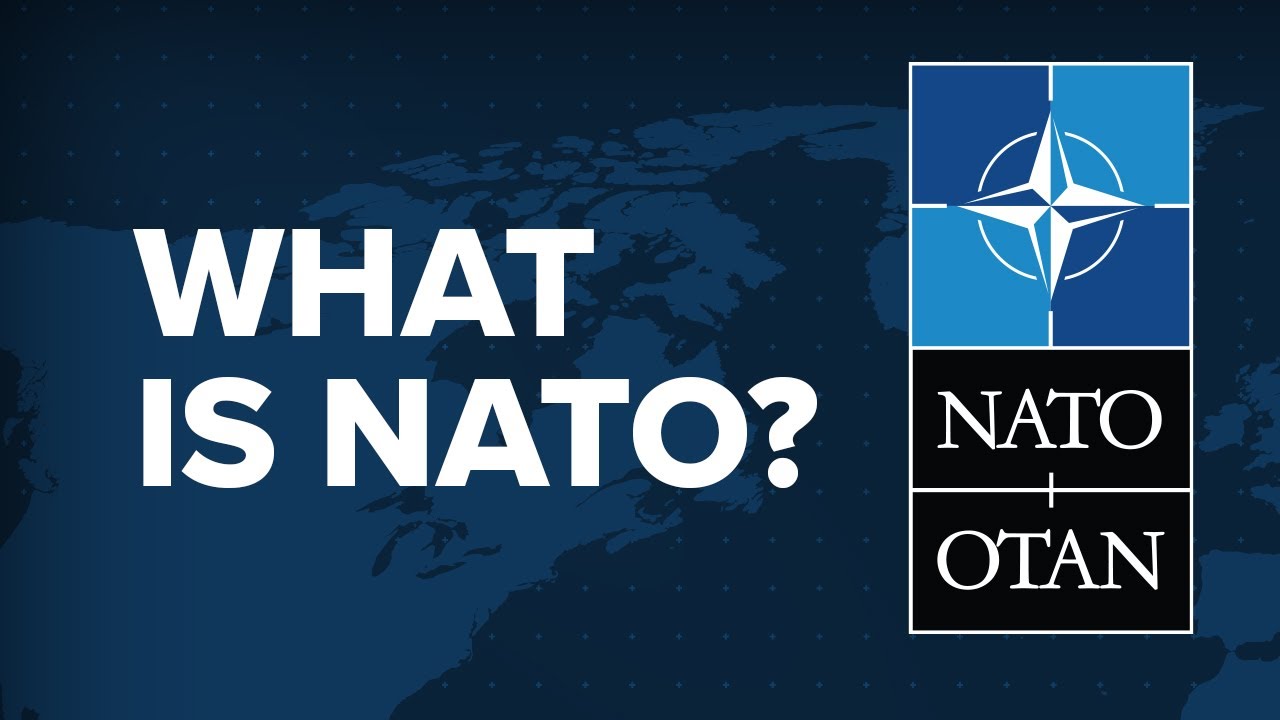What is NATO? All you need to know
Summary
TLDRNATO, founded in 1949, is an alliance of 32 member countries from Europe and North America, committed to collective defense and maintaining peace. It promotes security through diplomacy, military collaboration, and partnerships with non-member countries, addressing global challenges like terrorism, cyberattacks, and climate change. NATO’s core values include democracy, human rights, and the rule of law. In response to evolving threats, including Russia’s invasion of Ukraine and China’s growing influence, NATO continues to adapt to safeguard its members' freedom and security, while enhancing cooperation and stability worldwide.
Takeaways
- 🌍 NATO was established after World War II to maintain peace, prevent conflicts, and ensure collective defense.
- 🛡️ The principle of collective defense means an attack on one NATO member is considered an attack on all members.
- 🤝 NATO fosters dialogue, peaceful resolution of disputes, and cooperation on political and security issues.
- 🇪🇺 NATO has grown to 32 member countries from Europe and North America, united in their commitment to democracy, human rights, and the rule of law.
- 🔒 Aspiring members must share NATO’s core values and meet political, economic, and military obligations to join the Alliance.
- 🌐 NATO collaborates with global partners and organizations, like the EU and UN, to address common security challenges.
- ⚔️ NATO relies on contributions from its members, including military forces, equipment, and financial resources, to maintain security.
- 💼 The North Atlantic Council is NATO's political decision-making body, where all members have equal representation, and decisions are made by consensus.
- 🛰️ NATO addresses modern security threats, including terrorism, cyberattacks, and the challenges posed by China and Russia.
- 🚨 NATO continues to adapt to global changes, using both political and military tools to protect its members and address emerging crises.
Q & A
What is the primary purpose of NATO as stated in the script?
-The primary purpose of NATO is to maintain peace and freedom, and prevent conflict by providing a unique forum for dialogue, peaceful resolution of disputes, and cooperation on a wide range of political and security-related issues.
How many member countries does NATO have, and what are they known as?
-NATO has 32 member countries, which are known as Allies.
What is the principle that underlies NATO's collective defense?
-The principle of collective defense is that an attack against one member country is considered an attack against all of them.
What are the core values that aspiring NATO members must share?
-Aspiring NATO members must share NATO's core values of individual liberty, human rights, democracy, and the rule of law.
How does NATO promote stability and cooperation?
-NATO promotes stability and cooperation through its enlargement, which allows other European countries to join the Alliance, provided they meet the requirements and share NATO's values.
What is the role of NATO partners in the Alliance's activities?
-NATO partners are non-member countries that work with NATO on various activities such as military training exercises, crisis prevention and management, and information-sharing.
How does NATO's structure ensure that all member countries are equally represented?
-All member countries are equally represented in the North Atlantic Council, which is the chief political decision-making body of the Alliance, and decisions are agreed upon by all Allies.
What is the significance of NATO not having its own army?
-The absence of a NATO army signifies that NATO relies on member states to contribute forces, ensuring that every country brings its capabilities to the table and works together using NATO standards.
How does NATO finance its operations and missions?
-NATO is financed by its member countries based on a calculation linked to Gross National Income, with each member contributing a percentage of its budget, forces, and capabilities.
What are some of the security challenges that NATO is currently facing?
-NATO is currently facing security challenges such as Russia's actions, terrorism, conflict and instability in Africa and the Middle East, China's military build-up and coercive policies, and the impacts of climate change.
How does NATO respond to crises and emergencies?
-NATO responds to crises and emergencies using both political and military tools, including reinforcing its presence in the air, at sea, and on land, as well as providing assistance during natural disasters or humanitarian emergencies.
Outlines

此内容仅限付费用户访问。 请升级后访问。
立即升级Mindmap

此内容仅限付费用户访问。 请升级后访问。
立即升级Keywords

此内容仅限付费用户访问。 请升级后访问。
立即升级Highlights

此内容仅限付费用户访问。 请升级后访问。
立即升级Transcripts

此内容仅限付费用户访问。 请升级后访问。
立即升级5.0 / 5 (0 votes)






